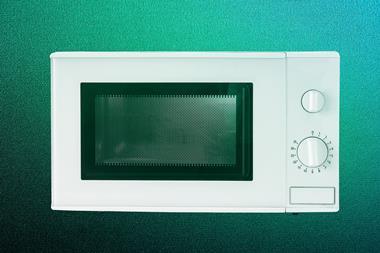
A new technique for producing silicon solar cells that are more than 24% efficient and yet can be rolled up like a sheet of paper has been demonstrated. The work could allow solar cells to be used in applications that currently use more expensive thin-film alternatives.
Crystalline silicon is an indirect-bandgap semiconductor, which means a photon travels further before being absorbed and forming an electron–hole pair than it would through gallium arsenide or a perovskite, for example. Many researchers claim that this makes it unsuitable for flexible or curved solar cells. Andrew Blakers at the Australian National University in Canberra, however, says this is fallacious, and that thin silicon can produce conformable or flexible cells from either spacing out the cells within a flexible matrix or tolerating crack formation – albeit with one or two percentage points lost in efficiency.
Researchers at the Shanghai Institute of Microsystem and Information Technology and colleagues started from 160μm-thick wafers, using a concentrated alkali to corrode the wafer to various different thicknesses. A smooth 60μm-thick wafer was as flexible as a sheet of paper. Unfortunately, owing to its glossy surface, it also reflected around 30% of incident light. The researchers therefore used a dilute alkali to create microscale pyramids on the surface. This significantly reduced the reflectivity, but also made the wafers more prone to breakage. ‘For a long time, people have had difficulty balancing the light reflection and the flexibility, which explains why most reported efficiencies of flexible crystalline silicon solar cells have been relatively low,’ explains team member Wenzhu Liu.
Using an ultrahigh-speed video camera, the researchers found that cracking always started at the edges. They therefore removed the texture from the edges by soaking them in a mixture of acids. The wafers regained their flexibility. The researchers found that the smooth region dissipated the strain, allowing the textured region to form a network of microcracks rather than undergoing brittle fracture at a single point. Solar cells fabricated from the wafers showed an efficiency of over 24% and retained their output after various stress tests.
‘It was completely obvious that the valleys between the texturing [in a silicon wafer] was a matter of great concern and this paper has quantified that properly and shown that if you get rid of the texturing at the edges then the breakage rate goes down a lot,’ says Blakers, who was not involved in the work. ‘For the conformable, tight-curvature market this will be attractive, but that is a very small market… Very good job done, interesting paper, all credit to the group that did the work, but it’s not going to be a game changer – not at all.’
‘That’s coming from the perspective of someone living in a country with a lot of space,’ laughs Rebecca Saive at the University of Twente. ‘Here in the Netherlands we see this very differently, we are a super-densely populated country and we have to take advantage of the constructions of the buildings that we already have. It’s true the market [for flexible cells] is small at the moment but there are significant efforts in Europe and Asia to make it bigger.’ She also says she feels ‘the authors didn’t have enough space to explain how important this is’, noting that increasing the flexibility of cells could reduce the need to encapsulate them in heavy glass and thereby make it safe to install solar panels on roofs that cannot currently support them, for example.
References
W Liu et al, Nature, 2023, 617, 717 (DOI: 10.1038/s41586-023-05921-z)

















No comments yet